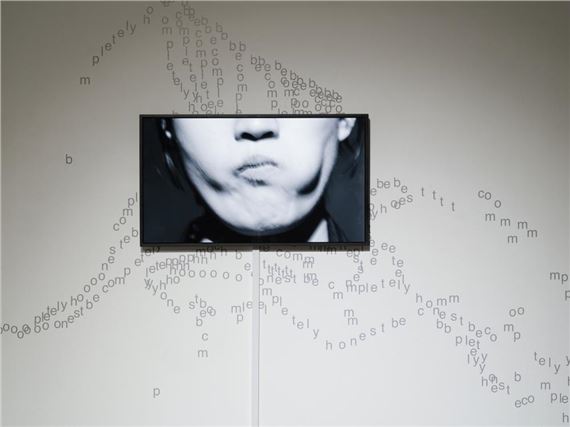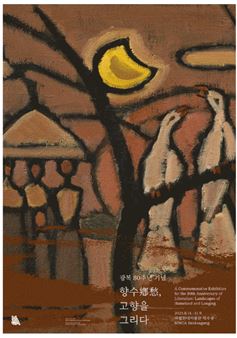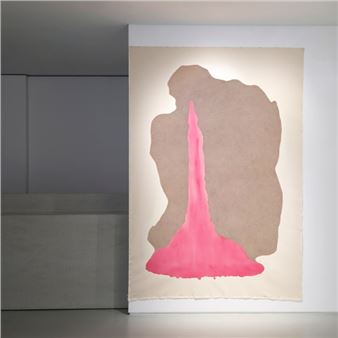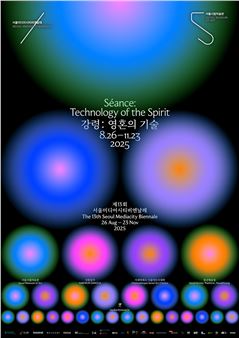Talking Heads
In English, the phrase тАЬTalking HeadsтАЭ refers to people who speak out or take center stage, particularly in political or social settings. This begs the question: whose voices are contained in an exhibition titled Talking Heads? Each year, the Seoul Museum of Art sets an agenda that is relevant to our times and draws upon the theme to ground a variety of exhibitions and programs. This yearтАЩs institutional agenda is тАЬaction.тАЭ Rather than highlighting conspicuous, attention-grabbing actions, however, Talking Heads explores the actions that are hidden, subtle, or overlooked for various reasons. With a nod to the current discussions in contemporary art that emphasize spectacle, radical innovation, and grand narratives, this exhibition pays close attention to the less visible undercurrents that may go unnoticed or ignored in a society increasingly desensitized by hyperstimulation, and instead bringing to light the quiet, more intimate movements around us. Importantly, the exhibition does not approach these тАЬnot-so-visible gesturesтАЭ through binary contrasts like center versus periphery, mainstream versus marginal, disabled versus able-bodied, or human versus non-human. Instead, it is situated in the spaces in between, engaging with the ruptures and gaps already present therein.
The exhibition unfolds around five key themes: The Art Museum and the Institution: Between the Rigid and the Flexible, Slippery Language, Erased or Yet-to-Come Histories, Existing Without Presence, and Tracing Traces: Shells-Skin-Ashes. The exhibition space itself is not strictly organized along these themes, however. By addressing issues both within and beyond the museum, Talking Heads aims to create a space where a diverse polyphony of voices can resonate to create layers of narratives that encompass the art museum, the artworks (and artists), and the audience. Though small and fleeting, the disparate actions and movements emitted in their own distinct registers are given due attention in an attempt to bring forgotten languages and hidden gestures into light.
тАЬYour work is not the primary objective of this exhibition.тАЭ These were actuals words spoken to the artists in the course of organizing the exhibition. It may have been unsettling for them to hear such words, but the statement reflects a deliberate shift to giving agency to the audience and placing the audienceтАХnot just the artist or their workтАХas the narrators of Talking Heads. While the exhibition engages with the artistsтАЩ works to trace invisible movements and subtle sensations, its broader aim is to envelope these intangible elements into the institutional framework of the museum by incorporating them in a range of public programs to be held as an extension of the exhibition.
In addition to handwritten texts displayed on the walls, the exhibition will include тАЬword sculpturesтАЭ made from the artistsтАЩ own words, positioned throughout the space. Visitors can also utilize the "audio (pairing) guide,тАЭ which are designed as an essential part of a more dimensional viewing experience, going beyond the supplementary standard audio guides.
Over the next nine weeks, Talking Heads will operate not just as an exhibition, but as a dynamic, multilateral project where the exhibition and its accompanying programs function as interwoven, evolving components. Alongside the тАЬword sculpturesтАЭ installed throughout the space, spoken words voiced in a range of registers and tones during the course of the exhibition will eventually be compiled and published as a "word collection".

Recommended for you
In English, the phrase тАЬTalking HeadsтАЭ refers to people who speak out or take center stage, particularly in political or social settings. This begs the question: whose voices are contained in an exhibition titled Talking Heads? Each year, the Seoul Museum of Art sets an agenda that is relevant to our times and draws upon the theme to ground a variety of exhibitions and programs. This yearтАЩs institutional agenda is тАЬaction.тАЭ Rather than highlighting conspicuous, attention-grabbing actions, however, Talking Heads explores the actions that are hidden, subtle, or overlooked for various reasons. With a nod to the current discussions in contemporary art that emphasize spectacle, radical innovation, and grand narratives, this exhibition pays close attention to the less visible undercurrents that may go unnoticed or ignored in a society increasingly desensitized by hyperstimulation, and instead bringing to light the quiet, more intimate movements around us. Importantly, the exhibition does not approach these тАЬnot-so-visible gesturesтАЭ through binary contrasts like center versus periphery, mainstream versus marginal, disabled versus able-bodied, or human versus non-human. Instead, it is situated in the spaces in between, engaging with the ruptures and gaps already present therein.
The exhibition unfolds around five key themes: The Art Museum and the Institution: Between the Rigid and the Flexible, Slippery Language, Erased or Yet-to-Come Histories, Existing Without Presence, and Tracing Traces: Shells-Skin-Ashes. The exhibition space itself is not strictly organized along these themes, however. By addressing issues both within and beyond the museum, Talking Heads aims to create a space where a diverse polyphony of voices can resonate to create layers of narratives that encompass the art museum, the artworks (and artists), and the audience. Though small and fleeting, the disparate actions and movements emitted in their own distinct registers are given due attention in an attempt to bring forgotten languages and hidden gestures into light.
тАЬYour work is not the primary objective of this exhibition.тАЭ These were actuals words spoken to the artists in the course of organizing the exhibition. It may have been unsettling for them to hear such words, but the statement reflects a deliberate shift to giving agency to the audience and placing the audienceтАХnot just the artist or their workтАХas the narrators of Talking Heads. While the exhibition engages with the artistsтАЩ works to trace invisible movements and subtle sensations, its broader aim is to envelope these intangible elements into the institutional framework of the museum by incorporating them in a range of public programs to be held as an extension of the exhibition.
In addition to handwritten texts displayed on the walls, the exhibition will include тАЬword sculpturesтАЭ made from the artistsтАЩ own words, positioned throughout the space. Visitors can also utilize the "audio (pairing) guide,тАЭ which are designed as an essential part of a more dimensional viewing experience, going beyond the supplementary standard audio guides.
Over the next nine weeks, Talking Heads will operate not just as an exhibition, but as a dynamic, multilateral project where the exhibition and its accompanying programs function as interwoven, evolving components. Alongside the тАЬword sculpturesтАЭ installed throughout the space, spoken words voiced in a range of registers and tones during the course of the exhibition will eventually be compiled and published as a "word collection".

 ARTISTS
ARTISTS
















